James Penney, CTO, Device Authority, says a well-structured, cloud-focused model makes it easier to handle rapid scaling and adapt to shifting regulations.
The number of IoT devices worldwide is set to almost double from 15.9 billion in 2023 to more than 32.1 billion in 2030, according to Statista.
This remarkable growth shows how connected systems can transform industries such as manufacturing and transportation by boosting efficiency, promoting real-time data insights, and enabling more automated processes.
As manufacturing and mobility industries become increasingly reliant on these devices, they face a growing challenge: how to secure these IoT ecosystems against evolving cyber threats without sacrificing operational efficiency?
Many organisations now rely on sophisticated digital architectures to link operational technology, industrial systems and IT environments.
This interconnection makes it difficult to protect every node in a network without a clear strategy and the right tools. Losing control of even a single device can lead to breaches that compromise data, disrupt production, or endanger public safety. The growing popularity of Industry 4.0 further highlights the critical need for built-in safeguards that protect users and systems without hindering day-to-day operations.
Automation to enhance machine identity management
One way to reinforce IoT security is to reduce the burden on human administrators by introducing automated processes that handle identity management. When factories and supply chains become more connected, the number of machine identities – ranging from cameras and sensors to autonomous vehicles – often surpasses human identities by a wide margin.
Managing such a scale manually creates space for human error and leads to inconsistencies in device authentication and credential updates. Automated workflows for identity and certificate management help solve this challenge. For instance, digital certificates can be generated, assigned and periodically renewed through predefined policies, ensuring that devices always have current credentials. Automation also covers password rotation and immediate credential revocation for decommissioned devices, which prevents overlooked accounts from becoming weak links in the system.
By standardising processes, manufacturers avoid the risk of gaps in coverage when employees move on or when devices are added at a rapid pace. This approach not only heightens security but also frees up IT teams to concentrate on higher-level objectives rather than repetitive manual tasks.
Monitoring threats in real time for faster response
Another vital element of IoT security involves maintaining constant visibility across all connected devices. Continuous monitoring allows organisations to detect unauthorised activities or system anomalies before they escalate.
Real-time alerts can spot sudden spikes in data traffic, attempts to access off-limits areas of a network or unexpected communication between devices that should not be interacting. Swift detection means teams can isolate or disconnect compromised devices, analyse incident details, and respond before threats spread deeper into an environment.
Detailed logs and audit trails support these efforts by capturing a record of user access, configuration changes and device behaviours. This makes it easier to trace suspicious activities back to their origin and to understand how hackers might exploit potential system weaknesses.
Many regulations, including GDPR and HIPAA, also require organisations to maintain thorough logs that show how data is protected. Automated threat intelligence solutions that integrate with these monitoring systems further strengthen resilience by interpreting real-time data and highlighting urgent priorities for security teams.
By building up these defences, manufacturers can reinforce trust in digital transformation programmes, which increasingly depend on robust device and network protection to ensure consistent productivity.
Unified identity management and the value of cloud-based solutions
Bringing all of these measures together into a cohesive framework is another key step toward secure, scalable IoT. Organisations often rely on a variety of devices in different locations, which complicates credential oversight and policy enforcement.
A unified identity management approach establishes a single, centralised point of control for assigning privileges, revoking rights, and applying uniform security rules. This approach extends time-tested principles such as privileged access management, widely used in IT, to IoT and operational environments. Authorised administrators can decide precisely which devices or systems a given user can access, how long that access remains valid, and what level of authentication is required.
Many manufacturers have started turning to cloud-based services to oversee these activities. A cloud-first model simplifies expansion and ensures consistent security management as new devices come online. Rather than relying on fixed hardware investments and manual processes at each facility, security teams can manage large-scale IoT deployments through a single interface.
This provides more flexibility in applying software updates and patching vulnerabilities across distributed operations. It can also streamline data collection and analysis by funnelling raw insights from devices into a central repository, where advanced analytics or machine learning tools can identify trends and emerging threats.
Adopting a cloud-based design can offer significant benefits, although it must be implemented with care. Compliance requirements differ across industries, so it is vital to choose a cloud partner that meets data governance mandates and provides vigorous encryption both in transit and at rest. Strong integration between cloud services and on-site equipment also matters, ensuring that a device’s security posture is consistent whether data is processed on premises or in the cloud.
Collaboration between operations teams and IT staff lays the groundwork for a thorough risk assessment that identifies where the most critical systems reside and how they can be safeguarded.
Ultimately, the potential of IoT to streamline production, reduce costs and improve overall service quality is too large to ignore, but these rewards hinge on a secure foundation. Automation addresses the problem of managing countless machine identities, continuous monitoring highlights suspicious behaviour before it spreads, and unifying identity controls prevents gaps that malicious actors might exploit.
Bringing these concepts together in a well-structured, cloud-focused model makes it easier to handle rapid scaling and adapt to shifting regulations. As connected industries continue to evolve, effective security remains an investment in both safety and long-term innovation, ensuring that organisations can trust their expanding digital footprints to support growth without compromising integrity.



